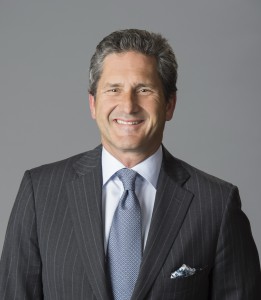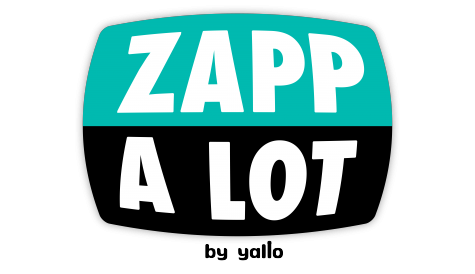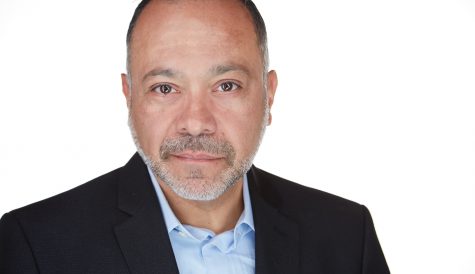
After more than 40 years of operation, DTVE is closing its doors and our website will no longer be updated daily. Thank you for all of your support.
Liberty Global: a story with pictures

Liberty Global CEO, Mike Fries
As every business journalist knows, storytelling is one of the principal jobs of the CEO of any public company. Providing a convincing narrative about the company’s strategy, putting the best possible gloss on the quarterly numbers, making sure listeners remain keen to follow the next instalment, is an essential part of the role.
Inevitably, the story changes over time. For Liberty Global, the story began with the triple-play and the attractiveness of putting video, voice and data together in a single bundle. The triple-play story saw the company through many years of quarterly reporting, eventually being embellished by the addition of mobile connectivity – the ‘quad-play’.
For the last few years the Liberty Global story has morphed into one about fixed-mobile convergence, with a secondary theme of building out fibre networks and how to pay for that. (The story has also become something of a complex family saga, with Liberty now essentially a holding company for joint-venture stakes and part-ownership rather than a unitary international cable operator.)
But one thing is clear: among the various other strands of the Liberty Global story, video – at least pay video as traditionally understood – has very much been a bit-part player of late. Video subscribers have been trending downwards for years now, and super-aggregation – the layering of apps from various streaming partners – has not really slowed down that decline.
Speaking to analysts following this week’s Q3 numbers reveal, Liberty Global CEO Mike Fries made the point that “video today only represents on average around 15% of our total revenue”.
This was against a background of further significant declines in video subs across Liberty’s operating businesses. Video subscribers from continuing operations – excluding JVs Virgin Media O2 and VodafoneZiggo – stood at 3,414,400, down 38,000. VodafoneZiggo lost 14,700 video subs in the same period.
Fries said that the consumer fixed business was “declining in all four big markets” where Liberty is active – meaning the UK, Belgium, Switzerland and the Netherlands. Video is now in the same basket as fixed telephony in this respect (except that it is less profitable). The positive in fixed networks is growth in broadband – now Liberty’s core product, accounting for 50% of overall revenues and growing at 6-7% a year. (The big growth market for Liberty overall, however, is mobile.)
Fixed consumer revenue was down in Q3, pushed lower by those video and fixed phone losses. Fries said that the company has “clear strategies to manage our video base from both a profitability and penetration perspective while we drive broadband share and broadband revenue”.
That broadband growth will be driven by Liberty’s ongoing twin-track approach to networks – building out fibre in greenfield sites while upgrading its legacy cable network.
During the analyst call, CFO Charlie Bracken reinforced the message that broadband and mobile are the up-and-coming stars of the show, while video and fixed telephony are low-margin, declining businesses. Bracken also suggested that video losses were not a huge problem because “TV profitability is materially lower versus broadband”.
Video even featured in a negative sense in the company’s Ventures unit, where the value of its portfolio fell, pushed lower by the falling share price of legacy broadcaster ITV, once the subject of speculation about a possible Virgin Media acquisition bid.
The interesting part, however, is that all this does not mean that Liberty is giving up on video. It continues to invest in technology – witness the recent launch of Virgin Media’s Stream product in the UK. During the analyst call, the point was made that Liberty can reduce the cost of content by pushing for it to be more variable, while Fries said that the cost of devices was falling and that “we’re doing a lot of things on the technology side to drive the overall rate of return”.
And while video may only account for 15% of the top line, there is still a qualitative consideration that is likely to keep the company in the video business.
That is why, having played down the importance of video to Liberty’s overall top line and classed it with fixed phone lines as a legacy product, Fries nevertheless contrived to give the video strand of the story a happy ending.
“We need to maintain that revenue stream even if it’s small, because we do know that consumers in the UK, for example, have told us that without a video product, they would be less interested in our broadband. That’s one of the advantages we have over every alt-net in the market as we’re offering an FMC converged bundle with video,” he said, responding to an analyst question.
“It does matter to consumers that you can offer them some sort of video solution, whether that’s an all-in box like an X1 or Xfinity to draw a comparison, or whether that’s more of an IP-first, digital-first, app-first box like our TV Stream box in the UK, which really drives you to streaming services. So having a solution for video is critical.”


